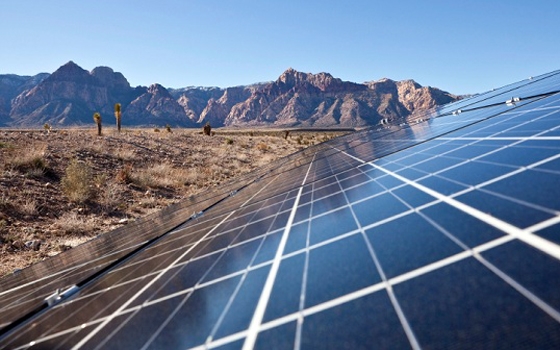Saudi Arabia and the United Arab Emirates are seeking to add 1,000 megawatts of solar capacity enough to electrify 200,000 homes. However, the renewable energy drive of setting up solar-power plants will need more than $1.5 billion in financing by the end of 2014.
The forecast expansion, which includes Jordan, will require loans and export credits, said Vahid Fotuhi, president of the Dubai-based Emirates Solar Industry Association.
Governments across the Middle East and North Africa consider sun and wind energy as crucial for meeting the needs of growing populations and economies, with Saudi Arabia leading the way.
Saudi Arabia plans to invest more than $100 billion to generate about 41,000 megawatts from solar energy, or a third of its total power output, by 2032. That compares with about 16 megawatts of solar capacity today, a level that places the kingdom behind Egypt, Morocco, Algeria and the UAE, according to Bloomberg New Energy Finance.
Abu Dhabi National Energy, a conventional energy-producer known as Taqa, raised about $4 billion in loans this year and in 2012. The $2.5 billion in revolving credits it arranged in December include a three-year credit priced at 75 basis points more than the London interbank offered rate, and a five-year component priced at 100 basis points more than the Libor benchmark, data compiled by Bloomberg show.
Abengoa Solar, a partner in an Abu Dhabi sun-power plant, borrowed $142 million at 175 basis points more than Libor, according to data compiled by Bloomberg. Costs are even higher for First Solar Inc. (FSLR), the largest US solar manufacturer and builder of Dubai's first solar electricity plant, which arranged a $431 million secured letter of credit at 225 basis points more than Libor, data gathered by Bloomberg show.
Oil producers want to develop renewables to conserve more crude for export, while countries relying on imported fuel see local green power as a cheaper alternative. State support for utilities and a growth in regional power demand of about 5 percent a year mean companies such as Abu Dhabi National Energy Co. (TAQA) can borrow at rates that are 100 basis points, or 1 percentage point, lower than Spain's Abengoa Solar SA.
Lenders may hesitate to continue funding the massive expansion as commercial banks seek to limit exposure to renewables projects, said Steve Mercieca, the Dubai-based chief executive officer of the Clean Energy Business Council. Governments should encourage the availability of Islamic bonds (sukuk) to help finance solar facilities under construction, he said.
"The Saudi market already has an attractive framework for building and funding traditional power plants, and liquidity is ample in local banks," Mercieca said. "Appetite is going to be substantial" for the funding of such projects, he said.
"If you see a rising population and rising energy demand, that really helps the risk profile," Amol Shitole, a credit analyst with SJS Markets Ltd. in Bangalore, India, said. Projects that can pair local companies with international power-plant developers already known to lenders will have "strong support from banks," he added.
Renewables investment in the Middle East and North Africa rose 40 percent last year to $2.9 billion, according to the International Renewable Energy Agency.
The Saudi Gazette
5 August























































